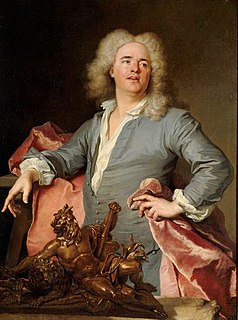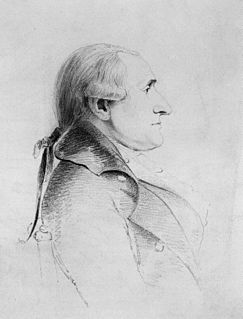
Abbé Nicolas-Louis de Lacaille, formerly sometimes spelled de la Caille, was a French astronomer who named 15 out of the 88 constellations. From 1750-1754 he studied the sky at the Cape of Good Hope in present day South Africa. Lacaille observed over 10,000 stars using just a half-inch refractor.

The Palace of Versailles was the principal royal residence of France from 1682, under Louis XIV, until the start of the French Revolution in 1789, under Louis XVI. It is located in the department of Yvelines, in the region of Île-de-France, about 20 kilometres southwest of the centre of Paris.

Marin Marais was a French composer and viol player. He studied composition with Jean-Baptiste Lully, often conducting his operas, and with master of the bass viol Monsieur de Sainte-Colombe for six months. In 1676 he was hired as a musician to the royal court of Versailles and was moderately successful there, being appointed in 1679 as ordinaire de la chambre du roy pour la viole, a title he kept until 1725.

Jean-Marc Nattier, French painter, was born in Paris, the second son of Marc Nattier (1642–1705), a portrait painter, and of Marie Courtois (1655–1703), a miniaturist. He is noted for his portraits of the ladies of King Louis XV's court in classical mythological attire.

Guillaume Coustou the Elder was a French sculptor of the Baroque and Style Louis XIV. He was a royal sculptor for Louis XIV and Louis XV and became Director of the Royal Academy of Painting and Sculpture in 1735. He is best known for his monumental statues of horses made for the Chateau of Marly, whose replicas now stand in the Place de la Concorde in Paris.

Jean-Baptiste Lemoyne was a French sculptor of the 18th century who worked in both the rococo and neoclassical style. He made monumental statuary for the Gardens of Versailles but was best known for his expressive portrait busts.

Ange-Jacques Gabriel was the principal architect of King Louis XV of France. His major works included the Place de la Concorde, the École Militaire, and the Petit Trianon and opera theater at the Palace of Versailles. His style was a careful balance between French Baroque architecture and French neoclassicism.

Edmé Bouchardon was a French sculptor best known for his neoclassical statues in the gardens of the Palace of Versailles, his medals, his equestrian statue of Louis XV of France for the Place de la Concorde (destroyed during the French Revolution; and for the Fountain of Four Seasons in Paris. He was also a draftsman and painter, and made s celebrated series of engravings of working-class Parisians.

Charles Étienne Louis Camus, was a French mathematician and mechanician who was born at Crécy-en-Brie, near Meaux.

The Louis XV style or Louis Quinze is a style of architecture and decorative arts which appeared during the reign of Louis XV of France. From 1710 until about 1730, the period known as the Regency, it was largely an extension of the "Style Louis XIV" of his great-grandfather and predecessor, Louis XIV of France. From about 1730 until about 1750, it became more original, decorative and exuberant, in what was known as the rocaille style, under the influence of the King's mistress, Madame de Pompadour. It marked the beginning of the European Rococo movement. From 1750 until the King's death in 1774, it became more sober, ordered, and began to show the influences of neoclassicism.

The Château de Bellevue was a small château built for Madame de Pompadour in 1750. It was constructed on a broad plateau in Meudon, above a slope overlooking the Seine to the east, but was demolished in 1823 and little remains.
Alexis Littré was a French physician and anatomist born in Cordes.

Henri François Le Dran was a French surgeon.

Prof Jean-Joseph Sue FRS FRSE was a French surgeon and anatomist.

Gustaf Lundberg was a Swedish rococo pastelist and portrait painter, working in Paris and later in Stockholm.

Charles Saint-Yves, or Charles de Saint-Yves, was a French ophthalmologist, famous for his treatment of the cataract and his treatise on ophthalmology.

Samuel Sharp FRS (1709–1778) was an English surgeon and author. As a surgeon at Guy's Hospital, from 1733 to 1757, was internationally famous. His A Treatise on the Operations of Surgery, was the first British study focuses exclusively on operative technique.
Charles Louis Stanislas Heurteloup was a French physician. He was the son of military physician Nicolas Heurteloup (1750-1812).

Jean-Baptiste Collin de Sussy was a senior official and politician. During the First French Empire he was Director General of Customs, then Minister of Industry and Commerce.



















